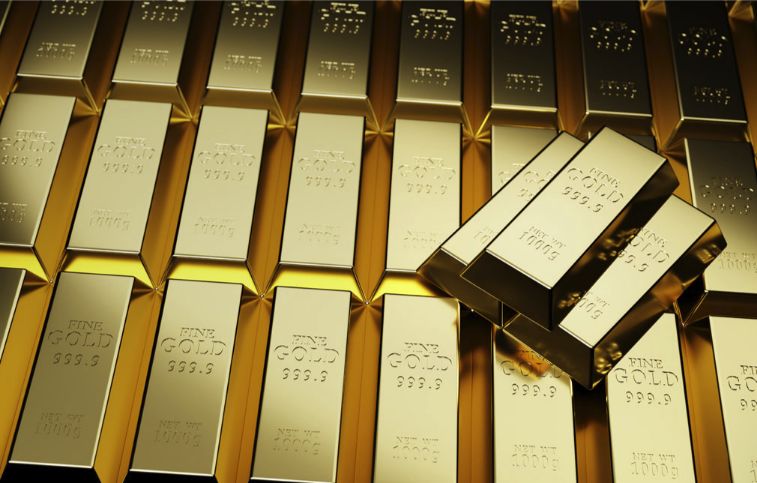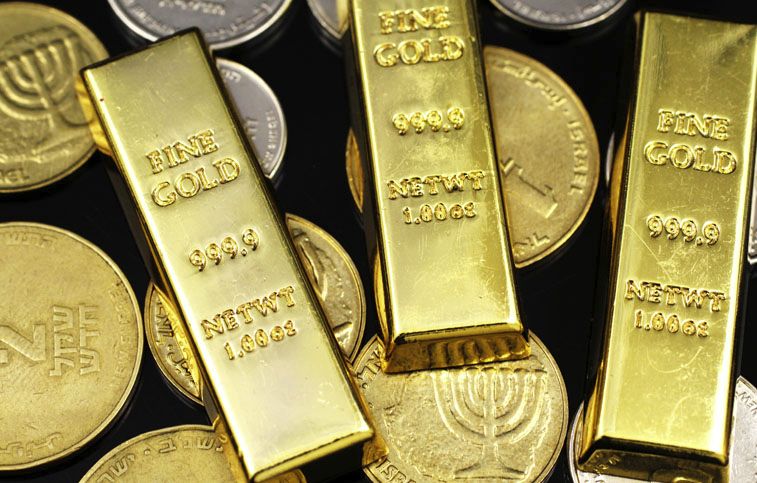Introduction
Silver can be a fantastic addition to anyone’s investment portfolio, even though it frequently takes a secondary role to gold. The sense of permanence, stability, and tangibility that comes with owning silver, whether it is in your home’s safe or a vault somewhere, appeals to people who invest in precious metals.
What Is Silver?
Silver is a chemical element with the atomic number 47 and the symbol Ag (from the Latin Argentum, which is derived from the Proto-Indo-European h2er: “shiny” or “white”). It is a transition metal that is soft, white, and lustrous and has the highest electrical conductivity, thermal conductivity, and reflectivity of any metal.
The metal is found in the crust of the Earth in three different states: pure, free elemental form (also known as “native silver”), alloyed with other metals like gold, and in minerals like argentite and chlorargyrite.
Historically, silver has been regarded as a precious metal. Although it is more plentiful than gold, native silver is much less common and is used in the making of bullion coins, sometimes alongside gold.
The metal continues to be an essential item in the overall global human cultures. For instance, ancient royal tombs from as far back as 4000 BCE have silver decorations and ornaments on display.
Uses Of Silver
- Silver is used to create printed electrical circuits and as a vapor-deposited coating for electronic conductors because it has the highest known electrical and thermal conductivity of any metal. It is also alloyed with other elements like nickel or palladium for use in electrical connections.
- Due to its exceptional capacity to transform ethylene into ethylene oxide, a precursor to numerous organic compounds, the metal is also used as a catalyst. Ethylene oxide is useful in manufacturing molded plastics, like handles and polyester.
- Silver paste is also helpful in making solar panels as it enables the capturing and carrying of electrical current onto photovoltaic cells. Therefore, one of silver’s most rapidly expanding applications is in photovoltaic cells.
- Silver is also utilized in the nuclear energy sector to capture neutrons and slow the fission rate in nuclear reactors. The reaction is sped up when the silver-made control rods are removed and slowed down when inserted into the nuclear core.
- Gold and silver have historically been the two metals used to make coins. Silver is a precious metal that is valuable and rare, making it an ideal resource for storing wealth. However, people now invest in investment-grade silver bullion instead of the silver coins that were once the primary means of wealth accumulation.
- Before the recent rise of digital media, photography was one of the main industrial uses of silver. The silver halide crystals in the film allow for the light sensitivity of conventional film photography. The silver halide crystals on the film change when exposed to light, capturing a latent image that later develops into a photograph. This method is helpful for film, X-rays, and non-digital consumer photography because of its accuracy.
- Due to its antibacterial properties and lack of toxicity, silver has played a crucial part in medicine for thousands of years. Prior to the widespread use of antibiotics, silver-protein and colloidal silver complexes were consumed or applied directly to the skin to treat illnesses. Silver foil was also wrapped around wounds to speed up the healing process. In order to treat and prevent infection, silver has also been used in dental hygiene products and eye drops.
- Since the 19th century, transparent glass surfaces have been covered with a thin layer of silver to create mirrors; however, modern mirrors also use other metals, such as aluminum. Modern structures frequently have transparent silver coatings on their windows that reflect sunlight and help keep the interiors cool in the summer. Silver-coated tiles are also used in the aerospace industry to shield spacecrafts from the sun.
What Does The Silver Industry Look Like?
Silver was used as a form of currency, while gold was primarily held and used by the wealthy. Since silver was used in everyday transactions, it was occasionally referred to as “the poor man’s gold.” Silver’s price remained below $1 per ounce up until the 1960s. However, the U.S. government removed silver from American coinage under the Coinage Act of 1965 as silver’s price started to increase.
Fortunately, silver’s price started to increase after it was demonetized, which made the metal assume the characteristics of an investment worthy option to consider. By 1980, the price of silver had reached its all-time high of $49.45 per ounce. This amounts to a staggering price increase of more than 2,700% in ten years. Unfortunately, its price fell to less than $11 in just five more months.
However, the price of silver started to increase in 2004 and reached $16 per ounce at the start of the financial crisis in 2007. But even after the crisis, the price dropped by almost 50% by the end of 2008.
The second significant price increase that followed established silver as a respectable crisis investment option. It rose to nearly $50 per ounce in 2011 from a price of less than $9 in 2008. That represents an increase of more than 500% in less than three years.
The cost dropped to the $15 to $16 range by the end of 2014, even dropping to $12 in the early 2020s. The COVID-19 pandemic was just getting started when silver prices shot up to almost $30 per ounce in March 2020. The price has since gradually decreased throughout 2021 and 2022.
Factors That Impact The Price Of Silver
Silver’s price is influenced by supply and demand, just like other precious metals. Due to its high conductivity, flexibility, and antibacterial properties, the metal has various industrial applications, mainly in manufacturing electronics and medical equipment. In the global transition to sustainable energy, it is also highly sought after by the solar energy and electric vehicle industries.
Despite the limited supply of both gold and silver, the U.S. Geological Survey reports that more than 1.7 million metric tons of silver have been found worldwide compared to only 244,000 tons of gold. Because of this, silver’s price has never surpassed $50 for a troy ounce, while gold’s price has reached a high of over $2,000 for the same quantity.
How To Invest In Silver
Silver investments are available in a variety of forms. This includes acquiring and taking ownership of the metal itself. Alternatively, you could invest in silver-related paper assets like stocks, funds, or even silver streaming businesses.
1. Silver Mutual Funds, ETFs and ETNs
Investments made by silver mutual funds are primarily made in the stock of silver mining companies. It’s not the same as actually owning the metal, but rather taking part in the production process. A silver mutual fund holds a portfolio of shares in these businesses.
An alternative way to hold silver bullion is through a fund called a silver exchange-traded fund (ETF). The metal itself won’t be yours entirely; instead, you are the owner of shares in the ETF that holds the silver.
Exchange-traded notes (ETNs) are unsecured debt securities that follow an underlying silver index. They do not pay interest, in contrast to bonds, since the value of silver affects how much the ETN costs.
2. Silver Bullion
This is the easiest way to invest in silver since you acquire ownership of the metal and can hold it when you purchase a silver bullion. The most common way to store silver bullion is in coins. For instance, you can purchase a coin that weighs one ounce of pure silver, in the form of the American Silver Eagle or the Canadian Maple Leaf.
Silver bullion bars might be a good option if you prefer to invest in more significant amounts of silver, as they are available in purchases of an ounce to a hundred ounces. However, you should be aware that, unlike coin trading, silver bullion bar trading with private parties or coin dealers is more complicated.
Many coin dealers will try to convince you to purchase numismatic silver coins, which are an entirely different kind of item. Numismatic coins have a higher value because they are rare than silver bullion coins, which play off the price of silver.
For instance, some of the American silver coins from the 1800s are selling for more than $1,000, or almost 40 times their silver content value. That resembles investing in an artwork more than it does in silver.
The fact that there is a great deal of disagreement regarding the grading and worth of each coin complicates numismatics. A coin may be worth $1,000 to one dealer but only $750 to another. Only those with specialized knowledge should handle numismatic coins.
3. Silver Mining Stocks
Buying stocks in companies that mine silver is another way to invest in the metal. In this approach, you will buy individual stocks instead of a portfolio through a mutual fund.
Numerous factors impact stock prices. These include global disruptions, environmental catastrophes, nationalization or regulation by foreign governments, labor unrest, and changes in the value of foreign currencies.
Silver mining stocks also face risks unique to the mining industry, such as; high capital costs, the possibility of mine exhaustion, an excess supply of the metal, and even the prospect of establishing a mine only to find little or no silver.
4. Silver Streaming Companies
Investing in silver streaming firms is similar to buying royalties from silver mining companies. This is because these companies aren’t engaged in silver mining; instead, they finance the businesses that do so. They’ll get paid back by being able to purchase silver from their mining partners at prices significantly below market value.
As a result, they can sell the silver that has been discounted at its total market value and profit from the difference. Stocks of silver streaming companies generally follow the price of silver, just like those of silver mining companies.
What You Need To Know Before You Invest In Silver
A silver ETF is the best option if you decide to invest in silver. This option allows you to invest in the metal with low fees and also offers the ability to buy in and sell out quickly. On the other hand, you won’t have to worry about obtaining the metal or managing the risks associated with silver mining stocks.
No matter what, ensure that your overall portfolio’s percentage of silver holdings is in the low single digits. During a financial crisis, a 5% position might be sufficient to provide you with impressive returns without ruining your portfolio if the price goes against your expectations.
What Are The Best Silver Mining Stocks?
Pan American Silver
This mining firm runs eight mines throughout the Western Hemisphere, including Bolivia, Mexico, Peru, Canada, and Argentina. Although gold is the company’s primary source of income, Pan American Silver has substantial silver resources. In comparison to 27% gold, 15% zinc, 6% lead, and 3% copper, silver made up 49% of the company’s mineral reserves in 2022.
The outstanding balance sheet of Pan American Silver is another quality that sets it apart. By 2022, the business had more cash than debt. Additionally, the company’s operations produce free cash flow, which it uses to reinvest in its shareholders through dividends and share repurchases while also funding expansions.
iShares Silver Trust
iShares Silver Trust is an ETF that majors in the investment of physical silver. By owning silver bars kept in bank vaults in London and New York City, the ETF aims to monitor the performance of the silver price.
Since the price of silver and the ETF have continued to be almost similar over the long term, the fund’s annual expense ratio is 0.5%, which is an ideal ETF expense ratio overall. This enables the investors to receive a favorable silver stock performance for a fair price.
Wheaton Precious Metals
This firm is an established streaming provider of precious metals where, instead of operating mines, Wheaton funds the mining companies with the required cash to cover some of the vital operational costs. In return, the company receives the right to purchase a portion of the metal produced by the mines at set prices.
Wheaton anticipates that between 2022 and 2031, its silver streams will make up about 40% of its production mix. Compared to its rivals in streaming and royalty, the company has the highest exposure to silver.
According to its latest report, Wheaton is entitled to buy silver for an average price of $5.25 per ounce through 2026. Therefore, every time the price of silver rises above that point, the firm makes a profit.
Fortuna Silver Mines
Located in Canada, Fortuna Silver Mines specializes in extracting silver in West Africa and Latin America. The business operates gold, silver, lead, and zinc mines, and its Canadian stock ticker is FVI.TO.
Silvercorp Metals Inc.
Silvercorp Metals is a mining company with its headquarters in Canada, which buys, explores, and develops mineral properties in China. These metals include silver, zinc, and lead. In Canada, Silvercorp Metals is traded under the symbol SVM.TO.
The company announced a share repurchase program beginning on August 24 that would last until August 28, 2023. This means the firm can repurchase up to 7.1 million common shares through this program.
Final Remarks
Although silver is considered a haven asset due to its stability during times of economic uncertainty, it is essential to note that the silver market is much smaller than gold. It also tends to experience higher volatility levels which may impact the silver mining companies’ stock prices.
Therefore, it is essential to conduct thorough research before you proceed to invest in silver. Fortunately, this article has provided you with all the relevant information required in silver trading; hence you are in a much better position to make an informed investment decision.












